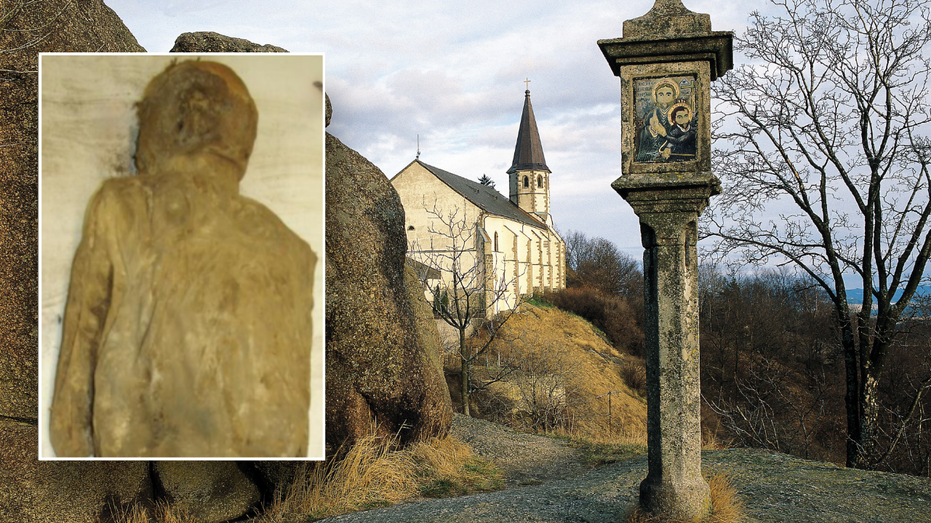WARNING: This article contains graphic images. Reader discretion is advised.
Researchers have uncovered the reason an “unusual” 18th-century mummy was preserved so well in Austria – and it’s highly abnormal.
A study about the mummy was recently published in the journal Frontiers in Medicine. The so-called “air-dried chaplain” is housed in the crypt of the church of St. Thomas am Blasenstein in Upper Austria.
Historians believe the mummy’s identity was most likely Franz Xaver Sidler von Rosenegg, a vicar who had been temporarily delegated to the St. Thomas parish at the time of his death.
He was between 35 and 45 years old when he died and passed away between 1730 and 1780, according to carbon dating. Experts were able to glean details about his life, including his diet, from the study.
“He had a high-quality diet based on terrestrial animal products [and] showed no signs of major physical work load,” the study noted.
Despite his relatively healthy lifestyle, researchers believe that he died from an acute pulmonary hemorrhage after suffering from tuberculosis.
“[He] was most likely a pipe smoker and suffered from chronic active pulmonary tuberculosis with peripheral and central (hilar) calcifications (primary tuberculous complex) and a right lower lobe cavity with focal heterotopic ossification and potential active inflammation,” the study detailed.
But experts were stunned when they came across the mummy’s midsection and found it full of curious material – including wood chips, twigs and fabric.
“Most surprisingly, we detected, in the otherwise completely intact abdominal (and pelvic) cavity, extensive packing with foreign material, which was identified as a mixture of wood chips, fragmented twigs, large amounts of fabric of various types, including elaborate embroidered linen, and even pieces of silk,” the article said.
Researchers also came across a solution made of zinc, chloride and copper that appeared to aid in the cadaver’s preservation.
The solution had been inserted into the mummy’s abdominal cavity.
For more Lifestyle articles, visit foxnews.com/lifestyle
“This embalming method seems to have included high-level zinc-ion solution impregnation (most likely zinc-chloride with small amounts of arsenic) and the addition of copper,” the study said.
Researchers added, “It led to an excellent state of conservation of the [body], while the face (and skull) and peripheral extremities were less well-preserved.”
Professor Andreas Nerlich discussed the findings in an email with Fox News Digital, noting the embalming technique was previously unknown.
“The most significant factors for the embalming of this mummy were the internal stuffing [of] fabric and wood chips and the zinc-chloride solution,” the expert said.
CLICK HERE TO SIGN UP FOR OUR LIFESTYLE NEWSLETTER
Though the mummy was found to have had a healthy diet, Nerlich said that factor “obviously had no influence.”
The professor added, “We have no idea whether this [embalming] technique has been applied more often, but this is the first verified case of such a treatment. We have no data on its use in other cases.”
The mummy is one of several well-preserved remains that have been studied and publicly reported in recent months.
Last year, archaeologists unsealed a 2,000-year-old tomb in Italy and found a mummy to be in “excellent state.”
In March, a female 130,000-year-old baby mammoth was dissected in Russia.
















Leave a Reply